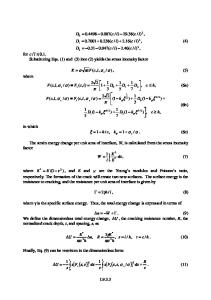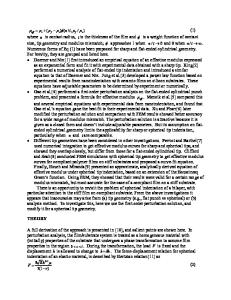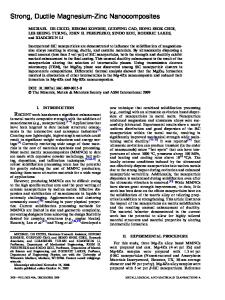Delamination of a strong film from a ductile substrate during indentation unloading
- PDF / 584,122 Bytes
- 12 Pages / 612 x 792 pts (letter) Page_size
- 35 Downloads / 333 Views
In this work, a finite element method was performed to simulate the spherical indentation of a ductile substrate coated by a strong thin film. Our objective was to study indentation-induced delamination of the film from the substrate. The film was assumed to be linear elastic, the substrate was elastic–perfectly plastic, and the indenter was rigid. The interface was modeled by means of a cohesive surface. The constitutive law of the cohesive surface included a coupled description of normal and tagential failure. Cracking of the coating itself was not included. During loading, it was found that delamination occurs in a tangential mode rather than a normal one and was initiated at two to three times the contact radius. Normal delamination occurred during the unloading stage, where a circular part of the coating, directly under the contact area was lifted off from the substrate. Normal delamination was imprinted on the load versus displacement curve as a hump. There was critical value of the interfacial strength above which delamination was prevented for a given material system and a given indentation depth. The energy consumption by the delamination process was calculated and separated from the part dissipated by the substrate. The effect of residual stress in the film and waviness of the interface on delamination was discussed.
I. INTRODUCTION
Industrial application of thin hard-film-coated systems continuously progresses. Coatings are commonly used to enhance reliability, such as chemical resistance, wear resistance, corrosion resistance, and thermal barriers. Adhesion between the film and the substrate determines, to a great deal, the durability of that system. The enhancement gained by the coating may be accompanied by the risk of poor adhesion between the coating and the substrate. Failure of the interface between the coating and the substrate may lead to premature failure of otherwise long lasting systems. Indentation is one of the traditional methods to quantify the mechanical properties of materials, and during the last decades it has also been advocated as a tool to characterize the properties of thin films or coatings. At the same time, for example for hard wearresistant coatings, indentation can be viewed as an elementary step of concentrated loading. For these reasons, many experimental as well as theoretical studies have been devoted to indentation of coated systems during recent years. Interfacial delamination is commonly observed in indentation experiments to be accompanied by other failure phenomena, such as coating cracking and subsequent spalling. 1,2 The corresponding load versus 1396
J. Mater. Res., Vol. 16, No. 5, May 2001
displacement curves show a reduction in the stiffness or even a sudden discontinuity which is usually attributed to the coating cracking. Delamination without any accompanying through-thickness cracks has been observed by Li and Bhushan2 in their nanoindentation experiments on single and multilayer coatings. There is no evidence in the literature, to the authors’ knowledge,
Data Loading...











